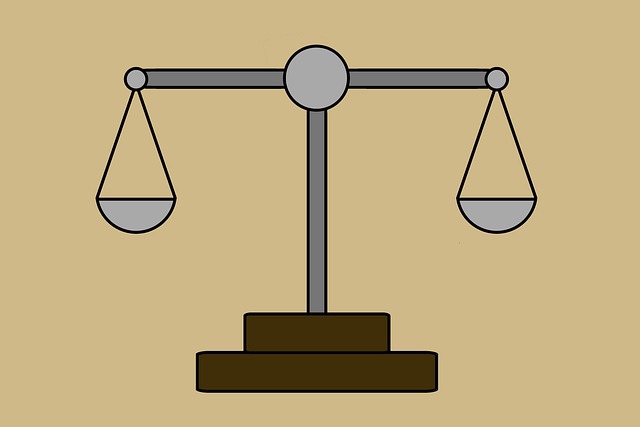The growing menace of mail wire frauds in the digital age mirrors aspects of the civil litigation process for patent infringement, demanding detailed investigation, evidence gathering, and legal expertise. This process, aimed at protecting intellectual property rights, involves strategic defense mechanisms, meticulous documentation, and expert analysis to navigate complex legal landscapes. Philanthropic and political initiatives bolster awareness and support for victims, while case studies highlight the global impact of such frauds. Specialized legal expertise is crucial in patent cases, with successful defense strategies relying on thorough investigation and compelling evidence presented through a structured civil litigation process.
Mail wire fraud, a sophisticated scheme targeting intellectual property rights, has become a growing concern in patent law. Understanding mail wire fraud involves recognizing its intricate mechanisms and the potential impact on innovators’ livelihoods. This article offers a comprehensive guide to fighting back against such fraud, focusing on civil litigation as a powerful tool for addressing patent infringement. We’ll explore strategic steps, real-world examples, and the latest legal tactics to navigate the complex civil litigation process for patent infringement effectively.
- Understanding Mail Wire Frauds: A Comprehensive Overview
- The Role of Civil Litigation in Addressing Patent Infringement
- Step-by-Step Guide: Navigating the Civil Litigation Process for Patent Cases
- Legal Strategies to Combat Mail Wire Fraud in Patent Lawsuits
- Real-World Examples and Case Studies of Successful Patent Infringement Claims
Understanding Mail Wire Frauds: A Comprehensive Overview

Mail wire frauds, a sophisticated form of financial deception, have become increasingly prevalent in today’s digital age. This type of scam involves manipulating electronic money transfers through deceptive practices and false pretenses, often targeting individuals and businesses alike. Understanding how these schemes operate is crucial to protect oneself from becoming a victim.
The civil litigation process for patent infringement, while unrelated on the surface, shares some parallels with identifying and combating mail wire frauds. Both involve meticulous investigation, gathering of evidence, and navigating complex legal frameworks. In the case of fraud, all stages of the investigative and enforcement process must be meticulously documented and executed to achieve extraordinary results. Philanthropic and political communities also play a vital role in raising awareness and supporting victims, ensuring that efforts to combat these crimes remain robust and effective.
The Role of Civil Litigation in Addressing Patent Infringement

The Civil Litigation Process for Patent Infringement plays a pivotal role in addressing and deterring mail wire frauds involving intellectual property rights. Unlike criminal proceedings, which focus on punishment, civil litigation aims to provide remedies such as damages or an injunction to stop the infringing activity. This process involves several key stages, ensuring a thorough investigation and fair enforcement of patent laws.
In the event of suspected patent infringement, whether it’s through direct copying or unauthorized use, individuals or entities accused of such acts face potential civil lawsuits. The white collar defense becomes crucial here, as legal teams navigate all stages of the investigative and enforcement process to protect their clients’ rights. Through meticulous documentation, expert analysis, and strategic argumentation, a complete dismissal of all charges can be pursued if the patent holder fails to prove direct infringement or cannot demonstrate substantial harm.
Step-by-Step Guide: Navigating the Civil Litigation Process for Patent Cases

Navigating the Civil Litigation Process for Patent Infringement can be a complex task, but with a strategic approach, it’s possible to achieve a favorable outcome. Here’s a step-by-step guide to help you understand this process:
1. Assess Your Case: The first step is to thoroughly evaluate your patent and the alleged infringement. Engage an experienced general criminal defense attorney who specializes in intellectual property law to analyze the strength of your case. They will assess if the accused product or service infringes upon your patented technology, design, or process.
2. File a Complaint: If you believe your patent has been infringed, file a complaint with the court. This document outlines the legal basis for your claim and details the infringer’s actions. Ensure it’s detailed and well-supported by evidence. The goal is to gain jurisdiction over the defendant and assert your rights as the patent holder.
3. Serve the Defendant: Once filed, the complaint must be served on the accused party. This involves delivering a formal notification of the lawsuit, allowing them time to respond and defend themselves against the charges. A skilled attorney will ensure this process is handled correctly to avoid any procedural hurdles.
4. Discovery Phase: After service, the case enters the discovery phase where both parties exchange relevant information. You’ll gather evidence to prove infringement, including product samples, documentation, and expert testimony. The defendant can also request similar information to build their defense. This stage is crucial for preparing your winning challenging defense verdicts strategy.
5. Pretrial Proceedings: As the case moves forward, pretrial proceedings involve motions, hearings, and negotiations. Your attorney may file motions to exclude irrelevant evidence or dismiss certain claims. The goal is to streamline the case and strengthen your position before trial. If successful, it could result in a complete dismissal of all charges against you.
6. Trial and Verdict: If the case doesn’t resolve through pretrial proceedings, it goes to trial. During trial, both parties present their cases to a judge or jury. You’ll need to prove your patent validity and infringement by a preponderance of evidence. A favorable verdict awards damages and protects your intellectual property rights.
Legal Strategies to Combat Mail Wire Fraud in Patent Lawsuits

In the fight against mail wire fraud in patent lawsuits, legal strategies play a pivotal role in ensuring justice and protecting intellectual property rights. One of the primary tools in the civil litigation process for patent infringement is thorough investigation and documentation. Attorneys must meticulously gather evidence to prove or disprove allegations of fraudulent activity. This includes examining electronic communications, financial records, and witness testimonies to identify any discrepancies or intentional misrepresentations. By employing these tactics, legal professionals can build a robust defense or prosecution strategy.
The goal is often to achieve a complete dismissal of all charges, which requires a comprehensive understanding of the law and procedural rules. Skilled patent lawyers use their expertise to navigate complex legal landscapes, ensuring their clients’ rights are upheld. Through aggressive yet strategic maneuvers, they aim for extraordinary results, protecting both the integrity of the patent system and the interests of their clientele.
Real-World Examples and Case Studies of Successful Patent Infringement Claims

Mail wire fraud, a growing concern globally, involves sophisticated techniques to defraud individuals and businesses through deceptive communication. Real-world examples and case studies illustrate the impact and prevalence of such crimes. One notable instance is the successful prosecution of a tech startup for patent infringement in the US. The company, accused of copying proprietary software designs, faced a civil litigation process that culminated in a substantial settlement. This serves as a warning to businesses operating in intellectual property-rich sectors.
The Civil Litigation Process for Patent Infringement involves several stages, from initial filing to trial. Through detailed case studies, we can learn strategies employed by successful plaintiffs. These include meticulous documentation of patent rights, thorough investigation of alleged infringers, and the presentation of compelling evidence. A general criminal defense approach often proves ineffective against such targeted intellectual property crimes. The unique nature of patent cases demands specialized legal expertise, and those with an unprecedented track record in defending clients against these charges are invaluable.
Mail wire fraud, particularly in patent infringement cases, can significantly disrupt businesses and innovators. However, understanding the intricacies of civil litigation process for patent infringement provides a powerful tool to combat these fraudulent activities. By leveraging legal strategies tailored to address mail wire fraud, individuals and organizations can ensure fair protection under patent law. The real-world examples highlighted throughout this article underscore the importance of proactive measures and robust legal tactics in navigating complex patent lawsuits, ultimately fostering an environment that rewards innovation and discourages deceptive practices.






